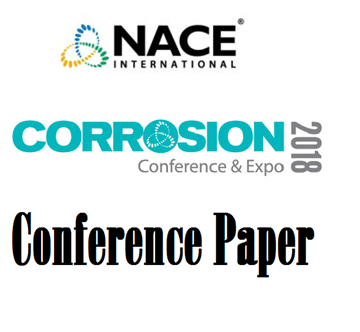Search
Maritime
View as
Sort by
Display
per page
51318-10886-Testing of Coatings for Offshore Service
Product Number:
51318-10886-SG
Publication Date:
2018
$20.00
51318-10912-Comparative Evaluation of Various Types of Metallic Coatings for Structural Steel in Marine Enviro
Product Number:
51318-10912-SG
Publication Date:
2018
$20.00
51318-10949-Cathodic Protection of Offshore Structures by Extreme Damage Tolerant Sacrificial Coatings
Product Number:
51318-10949-SG
Publication Date:
2018
$20.00
51318-10963-Fatigue and Static Crack Growth Rate response of C110 under CP using a single specimen methodology
Product Number:
51318-10963-SG
Publication Date:
2018
$20.00
51318-10971-Cathodic Protection System Simulation for Life Extension and Inspection Optimization
Product Number:
51318-10971-SG
Publication Date:
2018
$20.00
51318-10974-Validation of DNV RP F112 for Managing Hydrogen Induced Stress Cracking (HISC) in Super Duplex Stain
Product Number:
51318-10974-SG
Publication Date:
2018
$20.00
51318-10982-Analyzing Pig Returns from a Subsea Pipeline for MIC: Sampling and Testing Challenges
Product Number:
51318-10982-SG
Publication Date:
2018
$20.00
51318-11001-The Role of Corrosion in a Mooring Chain Link Premature Fatigue Failure
Product Number:
51318-11001-SG
Publication Date:
2018
$20.00
51318-11006- ISO 12736 1-Year Material Exposures: Testing Considerations and Interpretation of Resul
Product Number:
51318-11006-SG
Publication Date:
2018
$20.00
51318-11049-CORROSION RISK ASSESSMENT MODEL OF SUBSEA PIPELINES NETWORK
Product Number:
51318-11049-SG
Publication Date:
2018
$20.00
51318-11120-ICCP System for Internal Protection of Monopiles for Offshore Wind Farms
Product Number:
51318-11120-SG
Publication Date:
2018
$20.00
51318-11132-Surface Soluble salt concentration effect on long life offshore coatings systems performance
Product Number:
51318-11132-SG
Publication Date:
2018
$20.00












